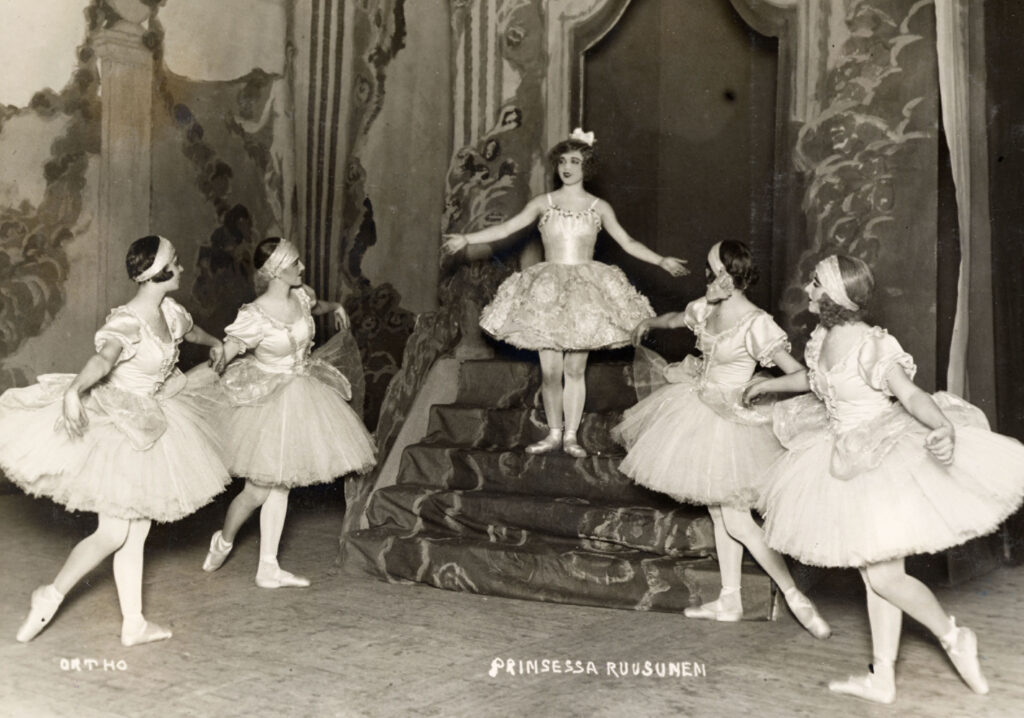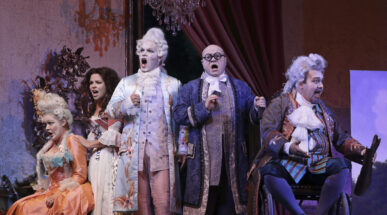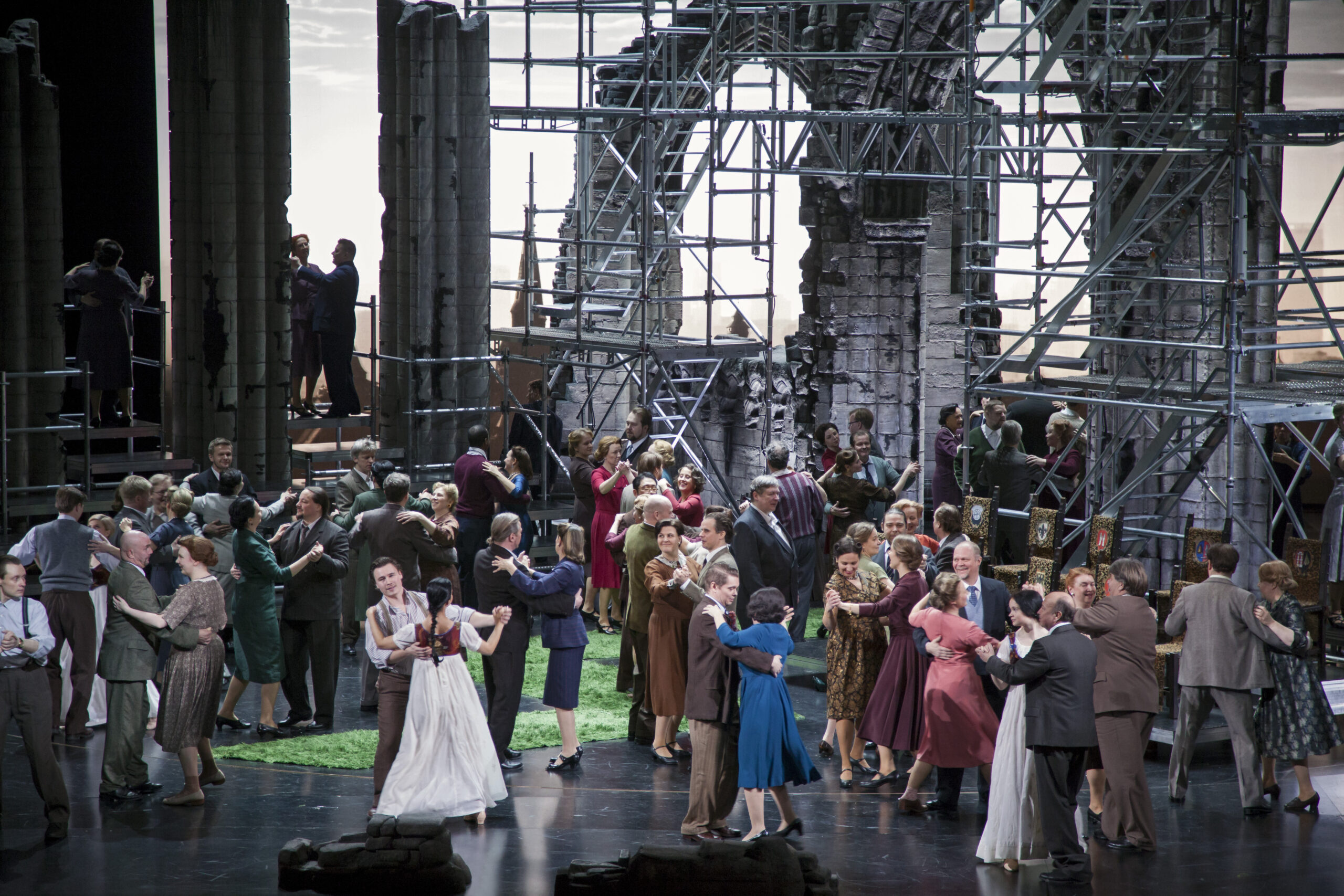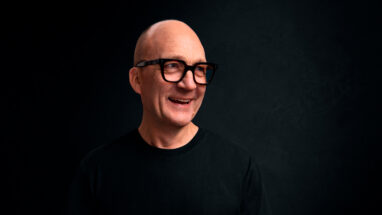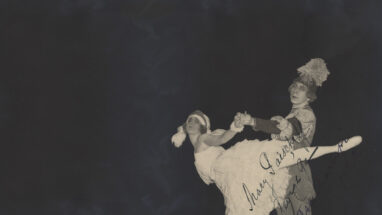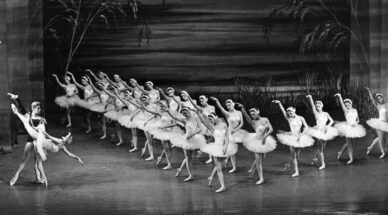

The Finnish National Opera and Ballet through the decades
The roots of the Finnish National Opera and Ballet trace back to the 1870s, when the Grand Duchy of Finland enjoyed a period of autonomy under Russian rule. For the first time, opera had a continuous presence in Finland. Though this only lasted for a few years, a fresh start was made in the 1910s when the Domestic Opera staged its inaugural performance at the Alexander Theatre.
It all started with Pagliacci
The Domestic Opera, founded by the internationally renowned opera star Aino Ackté and Edvard Fazer, had its first ever performance on 2 August, 1911. History was made, as the opening bars of Pagliacci rang out from the opera pit of Alexander Theatre, a Russian military theatre on Bulevardi, Helsinki. Ackté already left the company in the following spring. Fazer, however, continued on his own, steering the newly renamed Finnish Opera through the uncertain period of World War I.
When Finland gained independence in 1917, properties previously owned by Russians in the country were transferred to the Finnish state. These included a charming though modest military theatre in Helsinki. A dedicated opera house was already being planned for the Finnish Opera in Helsinki, as it was thought fitting for an independent nation to have its own opera venue in the capital city. As this project was expected to take as long as ten years, Alexander Theatre was temporarily handed over to the Finnish Opera in 1919. This arrangement extended well beyond its intended duration, eventually lasting over 70 years.
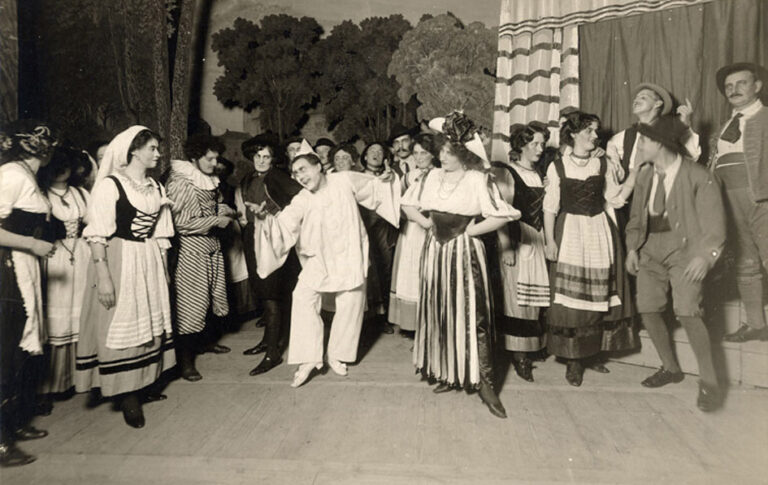
Swanlake as the first ballet
Edward Fazer, the director of the Finnish Opera, also had an interest in ballet. It was at his initiative that the company expanded to include a ballet troupe in 1922. To lead the dancers, Fazer hired George Gé, a ballet master from St. Petersburg’s ballet circles. Gé brought with him a rich Russian ballet heritage. Marking an ambitious start, the Finnish Opera’s ballet troupe was the first in Western Europe to stage Swan Lake. Initially, the majority of the dancers were students from Helsinki’s dance schools, and only a handful could dance en pointe. To attract new dancers, the company also offered ballet training, meaning standards rose quickly.
Finnish masterpieces that later became classics were already seen at the Old Opera House in its first decades. Leevi Madetoja’s opera Pohjalaisia (“The Ostrobothnians”), which has later been declared a national opera, had its world premiere in 1924. Juha, an opera composed by Madetoja and based on Juhani Aho’s novel, premiered in 1935. (Aarre Merikanto’s composition of Juha from the 1920s was not performed until 40 years after its creation.) In 1931, it was time for the first Finnish full-length ballet, Sininen helmi (“The Blue Pearl”, composed by Erkki Melartin and choreographed by George Gé.
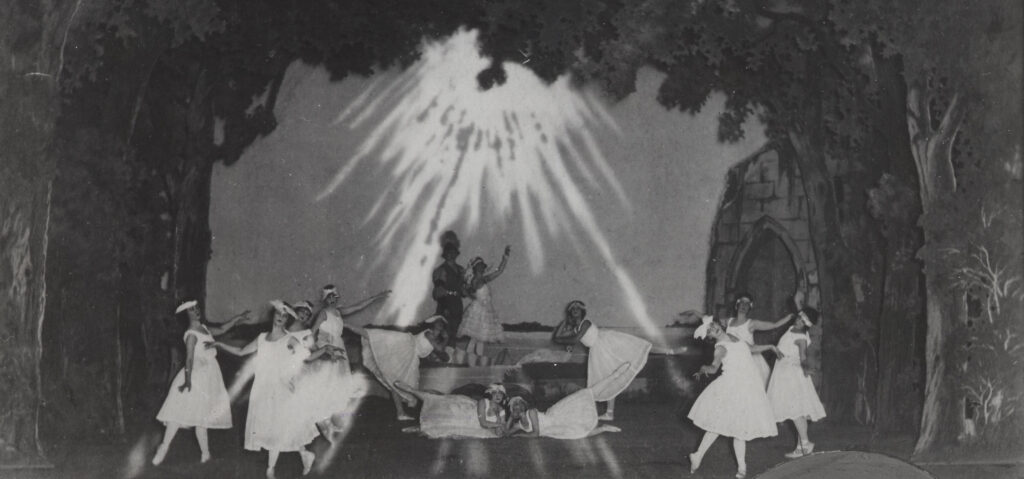
Exceptional cirmumstances during wartime
The Winter War and the Continuation War with Russia meant exceptional circumstances for the Finnish Opera. Many singers and dancers served at the front, which made staging performances challenging. All Russian classics were removed from the repertoire. The ballet troupe chose to perform Les Sylphides, which required just one male dancer, Arvo Martikainen, who was on leave from the navy. The performances in Helsinki took place during the day, as blackouts in case of air raids kept the city dark in the evenings. There was a shortage of everything from materials for sets to detergents, but the dancers received larger food rations according to their physically demanding work.
During the war years the singers and dancers of the Finnish Opera participated in entertaining soldiers near the frontline. In addition to small-scale tours by a few people, makeshift stages were set up in the field where entire operas and operettas were performed. These were often attended by as many as 4,000 spectators. Productions like Carmen and Countess Maritza were enhanced with spectacular dance scenes, which delighted the soldiers. Many of them had their first experiences of opera and ballet at the front.
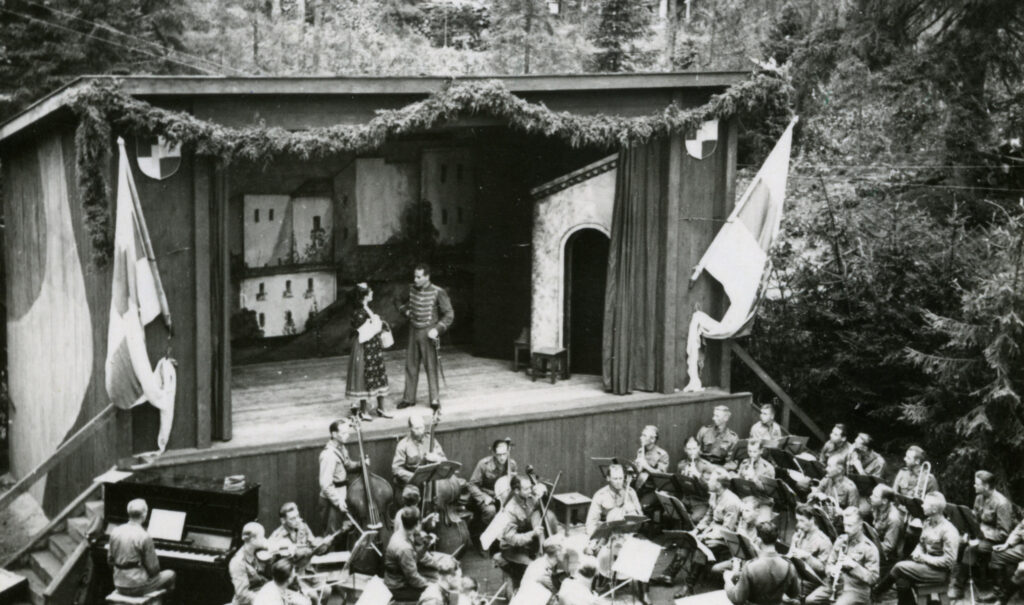
Tours and world class stars
The Finnish Opera soon got back to its feet after the war. Swan Lake premiered in Sweden in 1947 when the Finnish Opera Ballet visited Stockholm, and the opera troupe travelled to Leningrad in 1957. In the late 1950s the Finnish Opera Ballet went on an extensive tour of North America, and at the same time Finland was visited by several foreign guest stars. Finland’s position between the east and the west made the country a unique destination, where guest artists would arrive from both sides of the iron curtain during the Cold War. The new General Director of the Opera, Alfons Almi, launched an international ballet festival in 1957. It was the first time Soviet and American dancers had the chance to meet each other.
In summer, the international tours were complemented by tours around Finland. It was hard for singers and dancers to make a living outside the performance season, as they had no regular income during the summer holidays. As a result, Alfons Almi began to organise extensive domestic tours, for which he hired the artists of the Finnish Opera. The artists travelled by train between the performance locations, and sleeper carriages doubled as their home and transport for a month at a time. Every day, the train took them to a new location, where they were received by an enthusiastic audience.
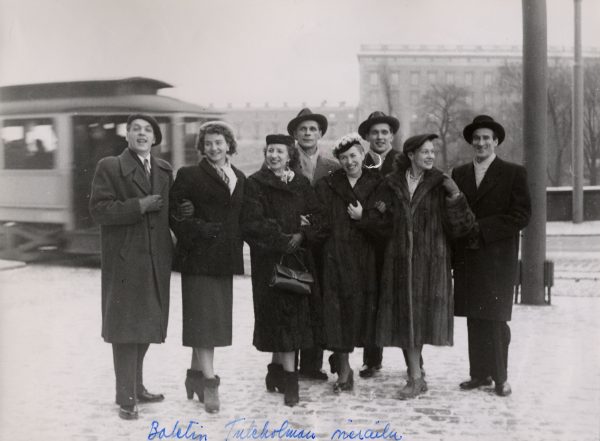
The Finnish opera gets its own orchestra
An important change in the Finnish Opera’s operations took place in 1956 when the company began to receive regular state funding and was renamed as the Finnish National Opera. This also marked a change in its ballet school’s activities. The school, which had been a key part of the Finnish Opera since 1942, could now be transformed into an institution for professional dance education, with students selected through entrance exams rather than based on their ability to pay tuition fees.
The development of the Finnish National Opera was hindered until the 1960s by the lack of its own orchestra. The Helsinki City Orchestra performed in opera and ballet productions, but they couldn’t dedicate enough time to rehearsals. The situation changed in 1963 with the establishment of the Orchestra of the Finnish National Opera. Composed of talented young musicians, this orchestra could now focus entirely on rehearsing and performing operas and ballets.
Under the leadership of Juhani Raiskinen, who headed the Finnish National Opera from 1973, the repertoire came to include operas about ordinary Finns. Joonas Kokkonen’s Viimeiset kiusaukset (“The Last Temptations”) and Aulis Sallinen’s Punainen viiva (“The Red Line”) became major successes, taking Finnish opera to the world’s greatest stages from New York to London. The rise of Finnish works also extended to ballet world premieres, most notably Marjo Kuusela’s choreography for Seitsemän veljestä (“The Seven Brothers”) composed by Eero Ojanen.
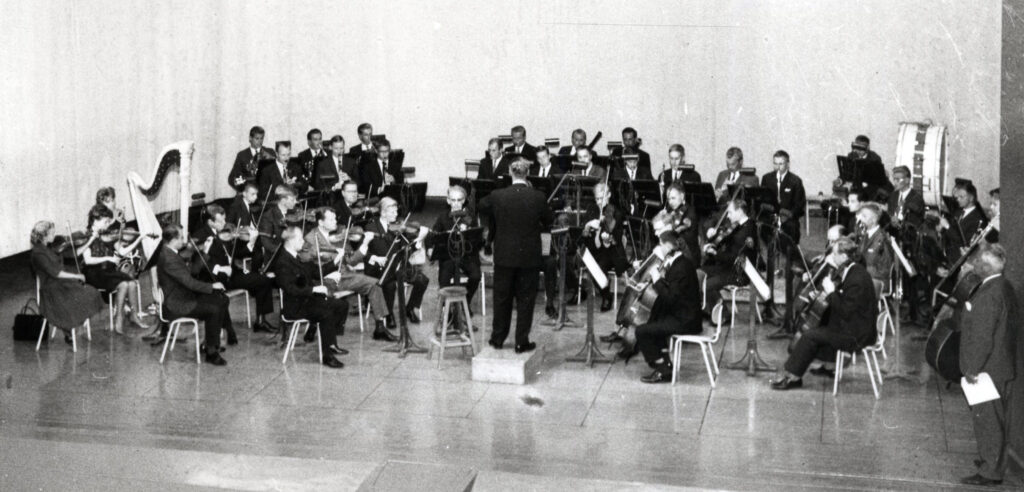
Finally a new opera house
Building a dedicated opera house in Helsinki had been delayed for decades due to financial challenges. The premises at Alexander Theatre had been too cramped from the very outset, and their limitations persisted despite an expansion effort in the 1950s that added new rehearsal rooms and dressing areas. Due to insufficient room, some activities had to be organised elsewhere. What’s more, the facilities failed to meet the evolving contemporary demands. A striking example of this was the inability to stage Swan Lake on the small stage of the Old Opera House, for which ballet classics had to be adapted due to space constraints.
After retiring in 1971, General Director Alfons Almi worked tirelessly to bring about the new Opera House. A suitable site was eventually found at the location of an old sugar factory on the shore of Töölönlahti bay in 1975, and after extensive discussions, the Helsinki City Council provisionally reserved it for the Opera House. In 1976, an architectural competition was organised, and in the following year, the design by three young architects, Eero Hyvämäki, Jukka Karhunen, and Risto Parkkinen, was declared the winner. Their winning design was called Scalapuikko.
However, financial challenges cast a shadow over the project’s progress. The funds collected for the construction only covered the building’s design, and the revenues from lottery winnings were insufficient for such an extensive construction project. Ultimately, in the government’s supplementary budget for 1982, funding was promised for construction to start in 1987. The foundations were laid in 1988, and the new Opera House was finally inaugurated on 30 November, 1993. Aulis Sallinen’s opera Kullervo was performed on the Main Stage on the opening night, followed by a new version of the ballet Swan Lake during the opening week.
With its full-size stage, modern audience facilities and state of the art rehearsal and dressing rooms, the new Opera House took the Finnish National Opera and Ballet to the next level. It was now possible to stage large scale productions to high international standards. These included the first Finnish production of the Ring Cycle, directed by Götz Friedrich and performed from 1996 to 1999. Additional ballet dancers were recruited to join the company, as there was ample room to perform full-length classical ballets on the Main Stage. Additionally, the new Opera House had its own auditorium, Almi Hall, for minor opera productions and contemporary dance performances. It was named after the former General Director Alfons Almi, who had championed the construction project of the Opera House for years.
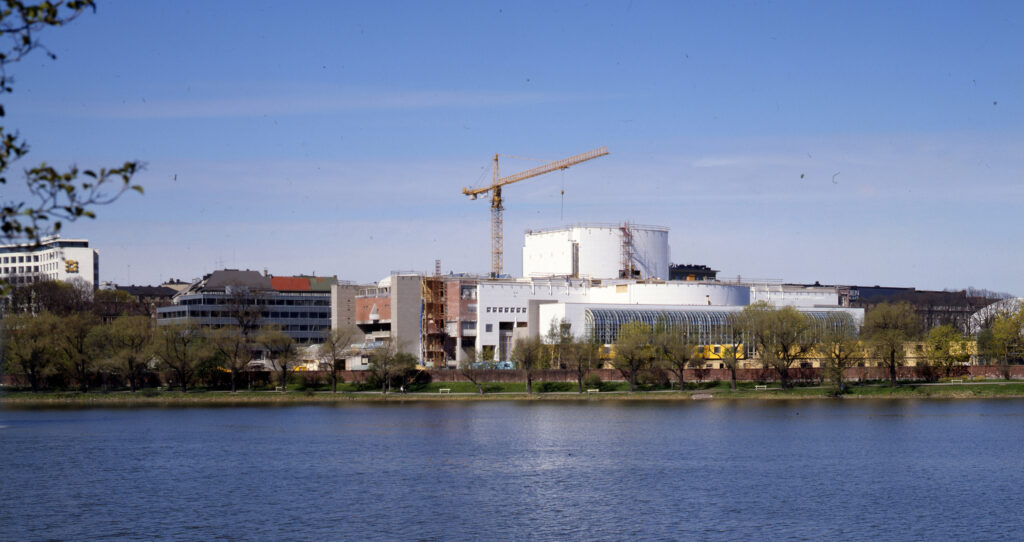
International projects and live broadcasts for home viewing
In the new millennium, opera and ballet have evolved into even more international and diverse art forms than before. The Opera House, which meets global standards, has welcomed many international co-productions, and the repertoire has expanded with a greater number of rented productions from other opera houses. The artist community of the Finnish National Opera and Ballet has also become highly international, with singers, dancers, and orchestra musicians hailing from various corners of the world, from Japan to Brazil, and from Australia to Canada.
Advances in technology have opened up new opportunities to bring opera and ballet to the reach of everyone in Finland, and even across the world. The first televised broadcast from the Opera House took place in the early days of television in 1957 when Swan Lake was shown live on TV. Regular live streams and recordings started in 2015. The Opera House was equipped with its own streaming equipment, including remote-controlled robotic cameras. In addition to TV broadcasts, live streams and recordings could be viewed through online streaming services, including the Finnish National Opera and Ballet’s own Stage24 platform and external partners such as Yle Areena and the international OperaVision.
The importance of recordings increased significantly during the COVID-19 pandemic when gathering restrictions emptied auditoriums. During this time, the Finnish National Opera and Ballet were pioneers in offering recorded performances for home viewing. For the first time, an entire premiere from the Main Stage was broadcast live without the presence of an audience: a new version of Swan Lake premiered on television and streaming services at the start of the Finnish National Ballet’s centenary year in 2022.
In the 2010s, the Opera House also sought to expand its audience by diversifying its repertoire. Entertaining mainstream productions have been introduced alongside traditional works of opera and ballet. Popular musicals like The Phantom of the Opera and productions combining various art forms with ballet, such as The Snow Queen and The Little Mermaid, have become new audience favourites.
The new Opera House has provided an opportunity to engage in audience outreach aimed at children, young people, and special interest groups. Over the years, this has evolved into a diverse range of activities, from children’s operas in the foyer to tea-time dances for senior citizens. Through audience outreach, opera and ballet have been showcased across Finland through workshops as well as performances for children and young people.
Besides audience outreach and live streaming broadcasts, the Finnish National Opera and Ballet have also performed around Finland in the 2010s and 2020s, with ballet summer tours, numerous guest performances, and the Arena Tour involving the entire institution.
Directors of the Finnish National Opera and Ballet
Directors and General Directors
- Edvard Fazer 1911–1938
- Aino Ackté 1938–1939
- Oiva Soini 1939–1952
- Sulo Räikkönen 1952–1955
- Alfons Almi 1955–1971
- Jouko Tolonen 1956–1960
- Kaj Kauhanen 1971–1972
- Leif Segerstam 1973–1974
- Juhani Raiskinen 1974–1984
- Ilkka Kuusisto 1984–1992
- Walton Grönroos 1992–1996
- Ulf Söderblom 1996
- Juhani Raiskinen 1997–2001
- Erkki Korhonen 2001–2007
- Päivi Kärkkäinen 2007–2018
- Gita Kadambi 2018–
Artistic directors of the Opera
- Aino Ackté 1911–1912
- Armas Järnefelt 1932–1936
- Tauno Pylkkänen 1960–1965
- Ulf Söderblom 1970–1973
- Jorma Hynninen 1984–1992
- Mikko Franck 2007–2013
- Lilli Paasikivi 2013–2023
- Thomas de Mallet Burgess 2023–
Artistic directors of the Ballet and Ballet Masters
- George Gé 1921–1935, 1955–1962
- Alexander Saxelin 1935–1954
- Birger Bartholin 1954
- Into Lätti 1962–1963
- Dimiter Parlic 1968–1969
- Elsa Sylvestersson 1969–1971
- Alan Carter 1971–1972
- Elsa Sylvestersson 1972
- Irina Hudova 1972–1973
- Konstantin Damianov 1974–1979
- Derek Westlake 1980–1981
- Gradimir Pankov 1981–1984
- Doris Laine 1984–1992
- Jorma Uotinen 1992–2001
- Dinna Bjørn 2001–2008
- Kenneth Greve 2008–2018
- Madeleine Onne 2018–2022
- Javier Torres 2022–
Chief Conductors
- Jussi Jalas 1958–1973
- Ulf Söderblom 1973–1993
- Miguel Gómez–Martínez 1993–1996
- Okko Kamu 1996–1999
- Muhai Tang 2003–2007
- Mikko Franck 2006–2013
- Michael Güttler 2013–2016
- Hannu Lintu 2021–
Text JUSSI ILTANEN
Photos THE ARCHIVE OF THE FINNISH NATIONAL OPERA AND BALLET

